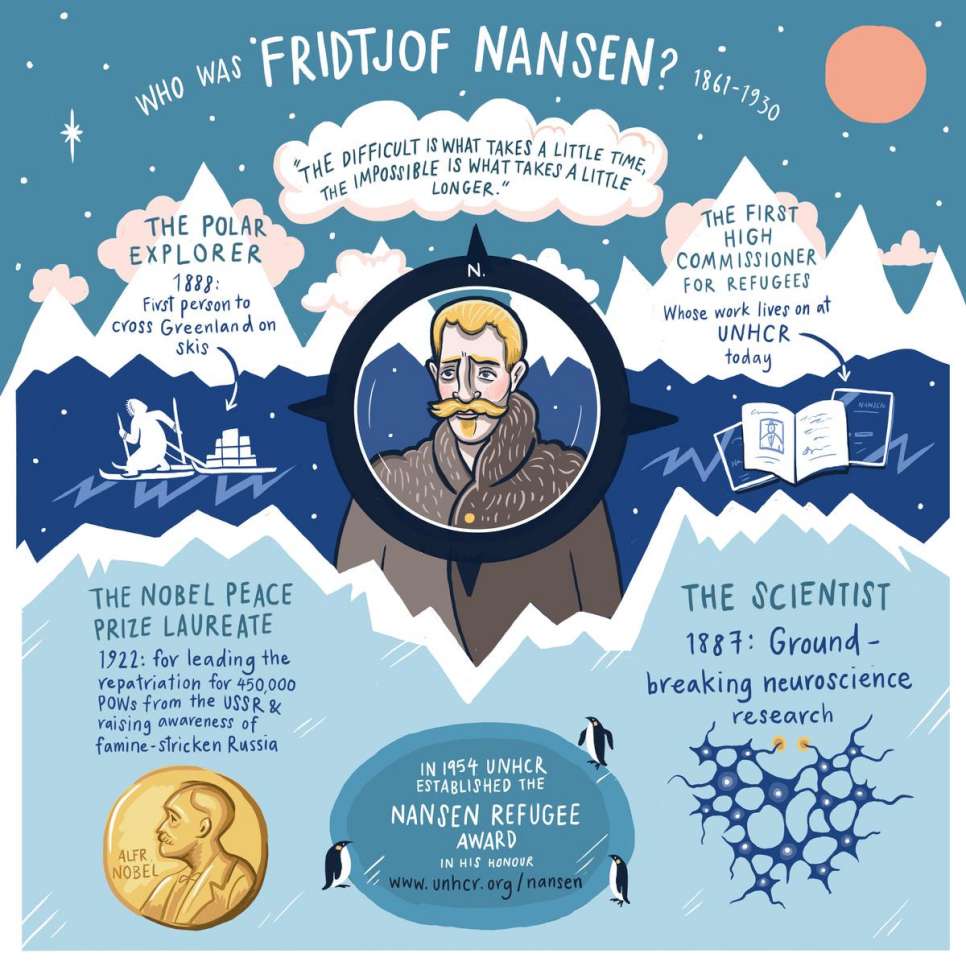About the Award
"We must raise our banner in every country and forge the links of brotherhood around the world."
Fridtjof Nansen

Who was Fridtjof Nansen?
Fridtjof Nansen served as the first High Commissioner for Refugees in the League of Nations after displacement caused by the First World War. He served from 1920 to 1930, and his efforts helped hundreds of thousands of refugees to return home and many others to become legal residents in the countries where they had found refuge.
Nansen saw that one of the biggest problems facing refugees was the lack of internationally recognized identification papers. He established the first legal instrument to bestow international protection to refugees. This document came to be known as the ‘Nansen passport’.
As the first High Commissioner for Refugees, Nansen organized a relief programme for millions of Russians affected by the 1921-1922 famine. For his crucial work, he was awarded the Nobel Peace Prize in 1922.
History of the Award
The first UNHR Nansen Refugee Award was presented in 1954 to Eleanor Roosevelt, the first Chair of the UN Human Rights Commission and First Lady of the United States alongside President Franklin D. Roosevelt. Over the years, more than 60 individuals, groups or organizations have received the Award for their extraordinary service and outstanding work for people forced to flee their homes. You can see a list of past recipients here.
Since 2017, Regional Winners are also recognized for their humanitarian efforts.
View past winners of the UNHCR Nansen Refugee Award here.
Sponsors of the Award
The UNHCR Nansen Refugee Award is supported by the governments of Norway, Switzerland, the City and Canton of Geneva and the IKEA foundation.

